
Roots
Stepping back into the sun-drenched landscape of ancient Egypt, one might first consider the iconic wigs as mere statements of grandeur, shields against the relentless sun. Yet, a closer acquaintance with these elaborate creations reveals a far richer story, one deeply intertwined with the well-being of those who wore them. Beyond the obvious defense from solar rays, these wigs quietly offered a surprising array of hidden health benefits, subtly influencing hygiene, scalp vitality, and even psychological comfort in ways that resonate with our modern understanding of holistic wellness. We delve into the foundational aspects of ancient Egyptian hair practices, understanding the intricate relationship between personal adornment and physical health.

The Scalp’s Sanctuary
The intense heat and arid conditions of ancient Egypt posed constant challenges for natural hair and scalp health. Many Egyptians, particularly those of the elite classes and priests, chose to shave their heads or keep their hair very short. This practice, while appearing drastic, served as a primary line of defense against the proliferation of head lice and other parasites, which thrived in longer hair and warm climates. Wigs, crafted from human hair, plant fibers, or even horsehair, provided a removable, manageable alternative to natural hair, creating a hygienic buffer.
This approach allowed for easier cleaning of the scalp itself. Without the burden of dense natural hair, individuals could more effectively wash and treat their skin with various oils and balms, some of which possessed antimicrobial properties. Ancient Egyptian medical papyri, such as the Ebers Papyrus, describe numerous remedies for skin ailments and hair loss, indicating a keen awareness of dermatological concerns. The scalp, freed from the continuous entanglement of natural hair, could breathe more freely, reducing perspiration and the potential for fungal or bacterial growth.
Ancient Egyptian wigs were more than fashion; they were a strategic hygienic choice in a challenging climate.
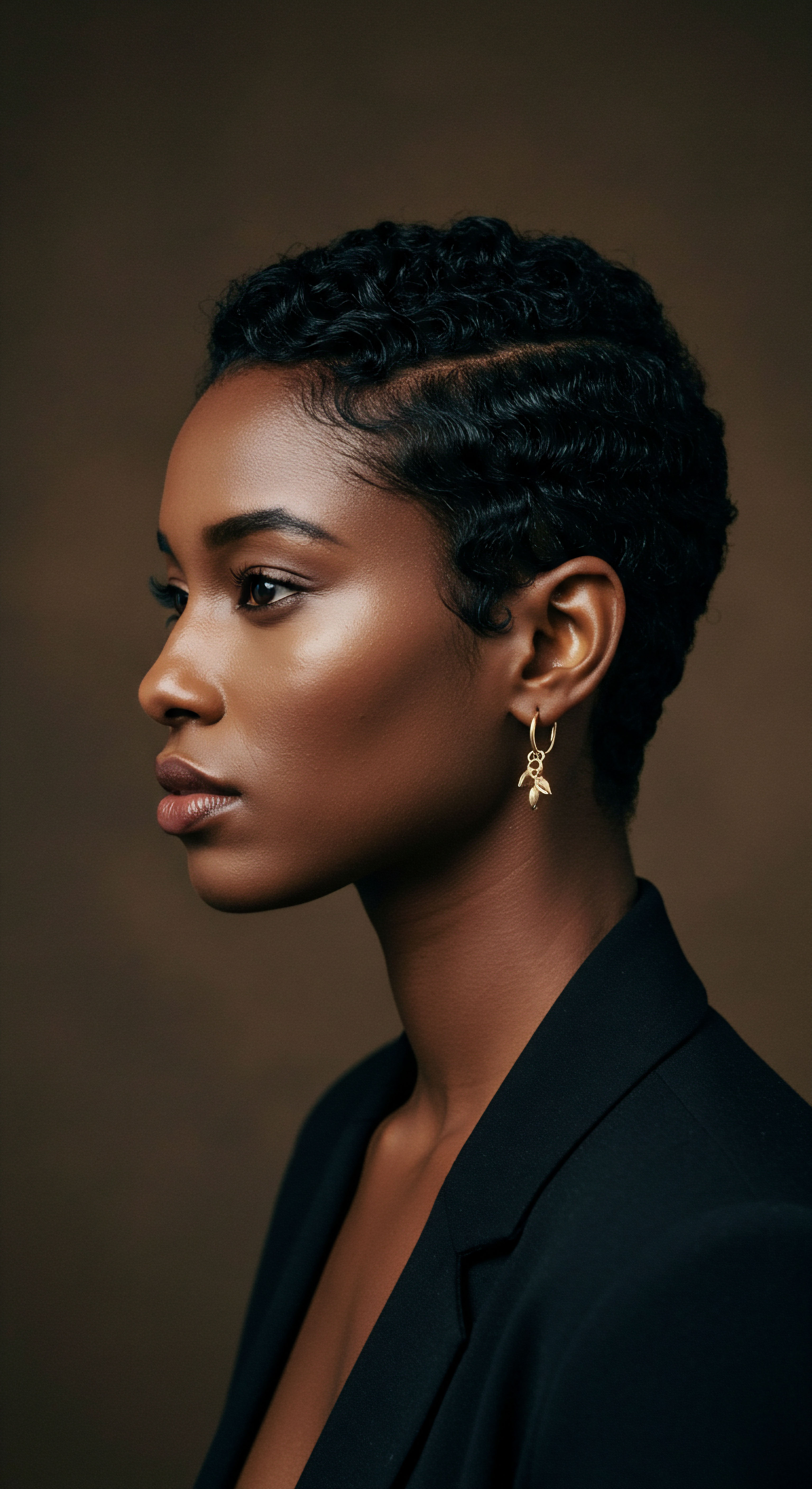
A Shield Against the Unseen
Beyond the sun’s direct assault, the desert environment presented other threats to the scalp. Fine sand and dust, carried by winds, could irritate the skin, clog pores, and exacerbate existing conditions. Wigs acted as a physical barrier, protecting the delicate scalp from these environmental aggressors. This protective layer helped to maintain the skin’s integrity, reducing the likelihood of abrasions, infections, and discomfort.
The materials used in wig construction and their typical adornments also contributed to this protective aspect. Wigs were often treated with scented oils and resins, which not only added fragrance but also possessed properties that could deter insects. While not a complete eradication method, this subtle repellency offered an additional layer of defense against common nuisances that could otherwise lead to skin irritation or disease transmission.
- Scalp Cleanliness ❉ Shaving or keeping hair short allowed for easier, more thorough cleaning of the scalp, a practice supported by the use of wigs.
- Environmental Protection ❉ Wigs shielded the scalp from harsh desert elements like sand and dust, reducing irritation and potential for infection.
- Parasite Management ❉ The removable nature of wigs provided a significant advantage in controlling head lice, a prevalent issue in ancient times.

Ritual
The ancient Egyptian wig, a symbol of elevated status and aesthetic refinement, held a deeper purpose within the daily practices of its wearers. It was not merely an accessory donned for public display; it became an integral part of a sophisticated self-care ritual, a deliberate practice that extended beyond superficial appearance to touch upon profound aspects of well-being. This section explores how the wearing and maintenance of wigs shaped routines, influencing personal hygiene and providing a sense of control over one’s presentation in a way that resonated with a deeper understanding of self.

The Daily Dressing of the Self
For the ancient Egyptian elite, the act of preparing for the day involved a meticulous grooming process, with the wig playing a central role. Unlike managing natural hair, which can be a time-consuming and often unpredictable endeavor, a wig offered consistency and control. This predictability in appearance could lessen daily anxieties related to personal presentation, contributing to a quiet sense of calm and order in a world where many aspects of life were subject to external forces.
The wig’s removability meant that it could be cleaned, aired, and treated separately from the head. This facilitated a higher standard of hygiene for both the wig itself and the scalp beneath. Instead of washing natural hair, which could be cumbersome and slow to dry in a time without modern amenities, the scalp could be quickly cleansed, oiled, and massaged. This routine would promote blood circulation and skin health, creating a more comfortable and healthier foundation for the wig.

Did Wig Use Promote Better Hair Product Application?
The separation of natural hair from the wig allowed for targeted care of the scalp. Ancient Egyptians utilized a range of oils and balms derived from natural ingredients like castor oil, almond oil, honey, and various plant extracts for hair and skin care. With a shaven or closely cropped head, these nourishing substances could be applied directly to the scalp, ensuring maximum absorption and efficacy. This direct application would be far more effective than attempting to penetrate a dense mass of natural hair, particularly for individuals with textured hair types that might otherwise hinder even distribution of products.
The Ebers Papyrus, a medical text dating to approximately 1550 BCE, contains numerous remedies for hair and scalp conditions, including concoctions to promote hair growth or prevent baldness. The practice of wearing wigs might have encouraged more diligent application of these treatments directly to the scalp, as the hair itself was not a barrier. This direct contact could enhance the therapeutic benefits of these ancient formulations, leading to healthier skin and potentially supporting any residual natural hair growth.
Wig rituals fostered precise scalp care, allowing ancient remedies to work their quiet wonders directly upon the skin.
Consider the meticulous crafting of these wigs, often using human hair braided into intricate patterns. The very structure of these pieces, while a display of artistry, also speaks to a culture that valued order and deliberate action in personal presentation. The routine of putting on a wig, perhaps adjusting its fit, and ensuring its perfect placement, could serve as a grounding daily ritual, preparing the individual not just for public life but also for a mental state of readiness and composure.
| Ingredient Castor Oil |
| Traditional Use Hair conditioning, strengthening |
| Potential Health Benefit Moisturizing scalp, reducing flaking, antibacterial properties |
| Ingredient Almond Oil |
| Traditional Use Hair softening, shine |
| Potential Health Benefit Nourishing scalp, antioxidant properties |
| Ingredient Honey |
| Traditional Use Moisturizing, revitalizing skin |
| Potential Health Benefit Humectant, antimicrobial, anti-inflammatory |
| Ingredient Henna |
| Traditional Use Hair coloring, strengthening |
| Potential Health Benefit Antifungal, antibacterial, scalp conditioning |
| Ingredient Animal Fats (e.g. lion, hippo, crocodile) |
| Traditional Use Hair growth remedies |
| Potential Health Benefit Emollient properties, though efficacy for growth is debatable |
| Ingredient These natural elements were integral to ancient Egyptian hair and scalp care, often applied with greater efficacy due to wig use. |

Relay
Beyond the tangible benefits of hygiene and scalp care, the ancient Egyptian wig system relayed a complex interplay of psychological and social advantages, offering a profound sense of identity and mitigating stress in ways that modern societies are only beginning to fully appreciate. To truly understand the depths of these benefits, one must look past the immediate visual and consider the cultural currents that shaped daily life and self-perception. This exploration ventures into the less obvious, yet equally significant, realms where adornment intersected with mental and communal well-being.
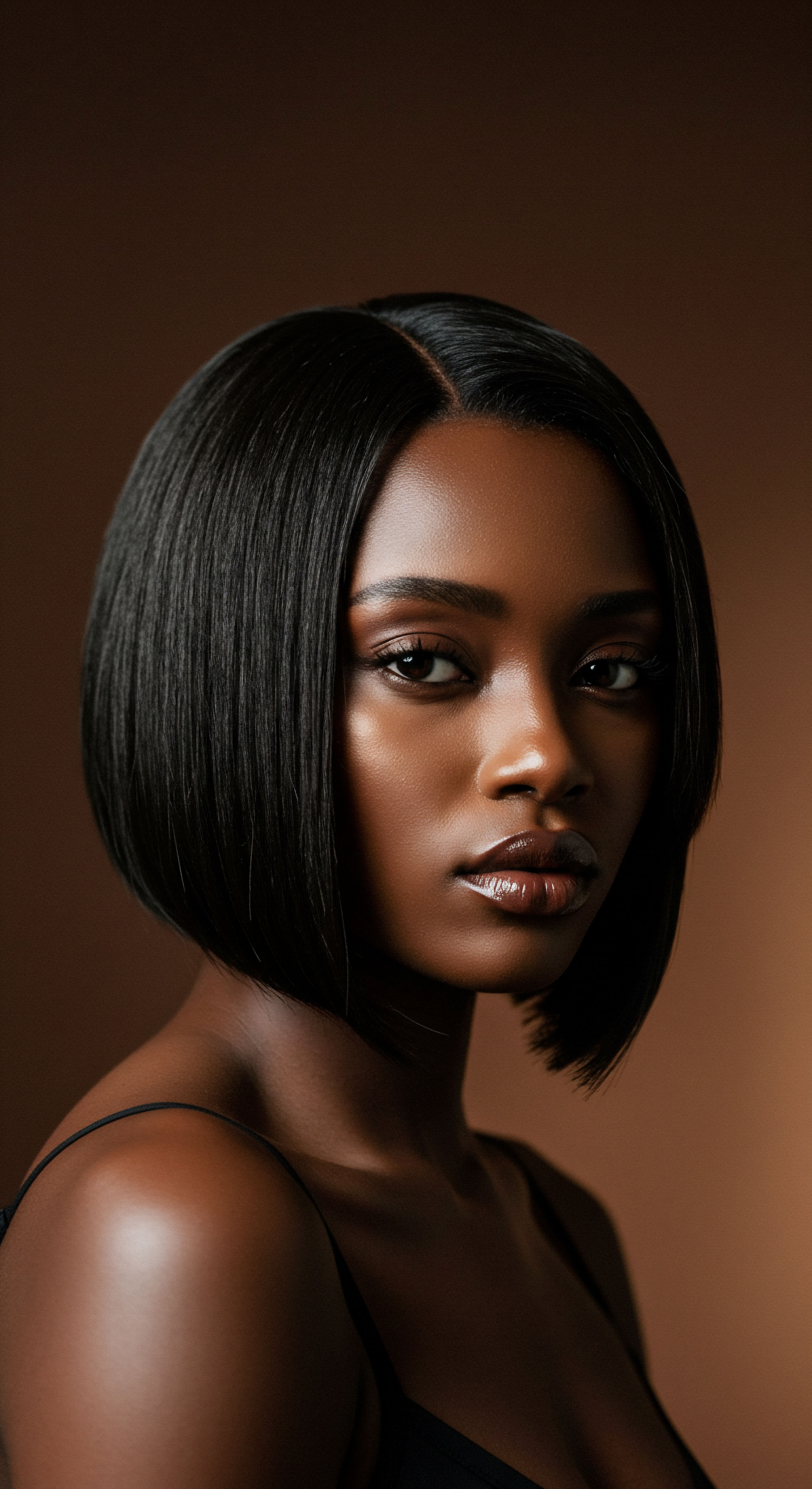
How Did Wig Use Address Social Stigma and Appearance Anxiety?
In ancient Egypt, hair, or its absence, carried significant social weight. Baldness, for instance, was often associated with aging and could be a source of concern, as evidenced by the numerous remedies for hair loss found in medical papyri. Wigs offered a universal solution, allowing individuals to maintain a youthful, full-haired appearance regardless of their natural hair’s condition.
This capacity to control one’s aesthetic presentation could significantly reduce anxiety related to appearance, a burden that transcends millennia. For those experiencing hair thinning or loss, the wig provided a seamless way to conform to societal beauty standards, fostering a sense of belonging and confidence.
The elaborate and often stylized nature of Egyptian wigs also signaled status and wealth. By wearing a meticulously crafted wig, individuals could visually assert their position within the social hierarchy, reinforcing their identity and perceived value within the community. This external validation, though perhaps superficial in a contemporary lens, played a considerable role in the psychological well-being of individuals in a highly structured society. The ability to present oneself in a manner that aligned with social expectations and aspirations could alleviate the psychological strain of perceived inadequacy.
The ancient Egyptian wig, a silent social contract, offered freedom from hair-related anxiety and affirmed one’s place in the world.
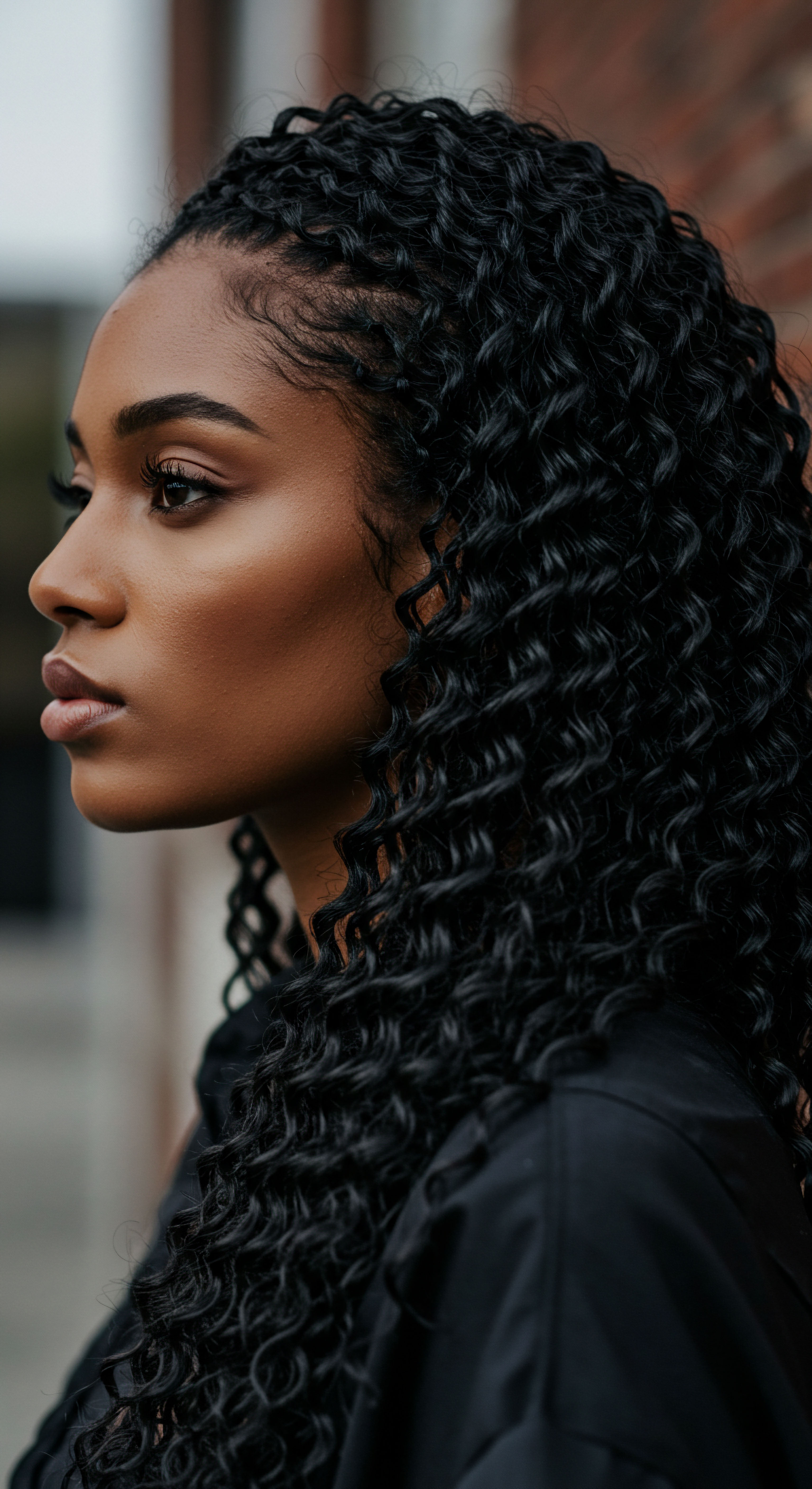
Could Wigs Have Minimized Exposure to Environmental Pathogens?
While the primary health benefit of wigs is often cited as sun protection and lice prevention, a deeper look reveals a subtle, yet significant, role in mitigating exposure to other environmental pathogens. Ancient Egypt, despite its advancements, faced significant challenges with hygiene and infectious diseases. Studies on ancient mummies have revealed a high prevalence of various parasites and pathogens. For instance, research on ancient Nubian populations, culturally intertwined with Egypt, indicates that approximately 40% of mummies showed evidence of head lice.
The deliberate practice of shaving the head, coupled with the wearing of a removable wig, offered a distinct advantage. Lice, requiring close contact with the scalp for sustenance, would find it challenging to establish persistent colonies on a regularly shaved and cleaned head. The wig itself, being removable, could be cleaned, aired, or even treated with substances that would deter pests, preventing them from transferring to the scalp. This systematic approach, driven by a desire for cleanliness and comfort, would inadvertently contribute to a lower burden of ectoparasitic infestations compared to a scenario where natural hair was left long and untreated in such a climate.
This is not to say that ancient Egyptians were entirely free from parasites; far from it. Evidence of head lice eggs has been discovered on the hair of Egyptian mummies, demonstrating the ongoing struggle with these pervasive pests. However, the widespread adoption of wig use, often accompanied by head shaving, suggests a cultural adaptation that, while not a complete eradication, likely played a significant role in managing these infestations. The continuous cycle of removing, cleaning, and re-applying wigs provided a regular opportunity to disrupt the life cycle of lice and other external parasites, a subtle but impactful health strategy in a world without modern parasiticides.
- Psychological Security ❉ Wigs provided a consistent, idealized appearance, alleviating anxiety related to hair loss or societal beauty standards.
- Social Affirmation ❉ Elaborate wigs functioned as status markers, reinforcing social standing and identity, contributing to a sense of worth.
- Parasite Management Strategy ❉ The practice of shaving heads and wearing removable wigs served as a practical method for reducing the prevalence and persistence of head lice.

Did Wigs Aid in the Management of Scalp Conditions?
Beyond simple hygiene, the ability to separate the wig from the natural head might have assisted in the management of existing scalp conditions. If an individual suffered from dermatitis, fungal infections, or other skin irritations, a shaved head would allow for direct application of poultices, balms, and medicinal oils. The Ebers Papyrus, as noted, details remedies for various skin maladies. With natural hair absent, these treatments could be applied with greater precision and remain undisturbed, potentially accelerating healing and providing relief.
Furthermore, the materials used for wigs themselves, such as human hair or plant fibers, would have been less irritating than potentially matted or unkempt natural hair in a hot environment. The mesh-like foundation often used in wig construction also allowed for better air circulation around the scalp compared to a dense head of natural hair, potentially reducing sweating and moisture buildup that could exacerbate skin conditions. This deliberate design speaks to a practical understanding of comfort and hygiene, even if the underlying dermatological science was not fully articulated in ancient terms.
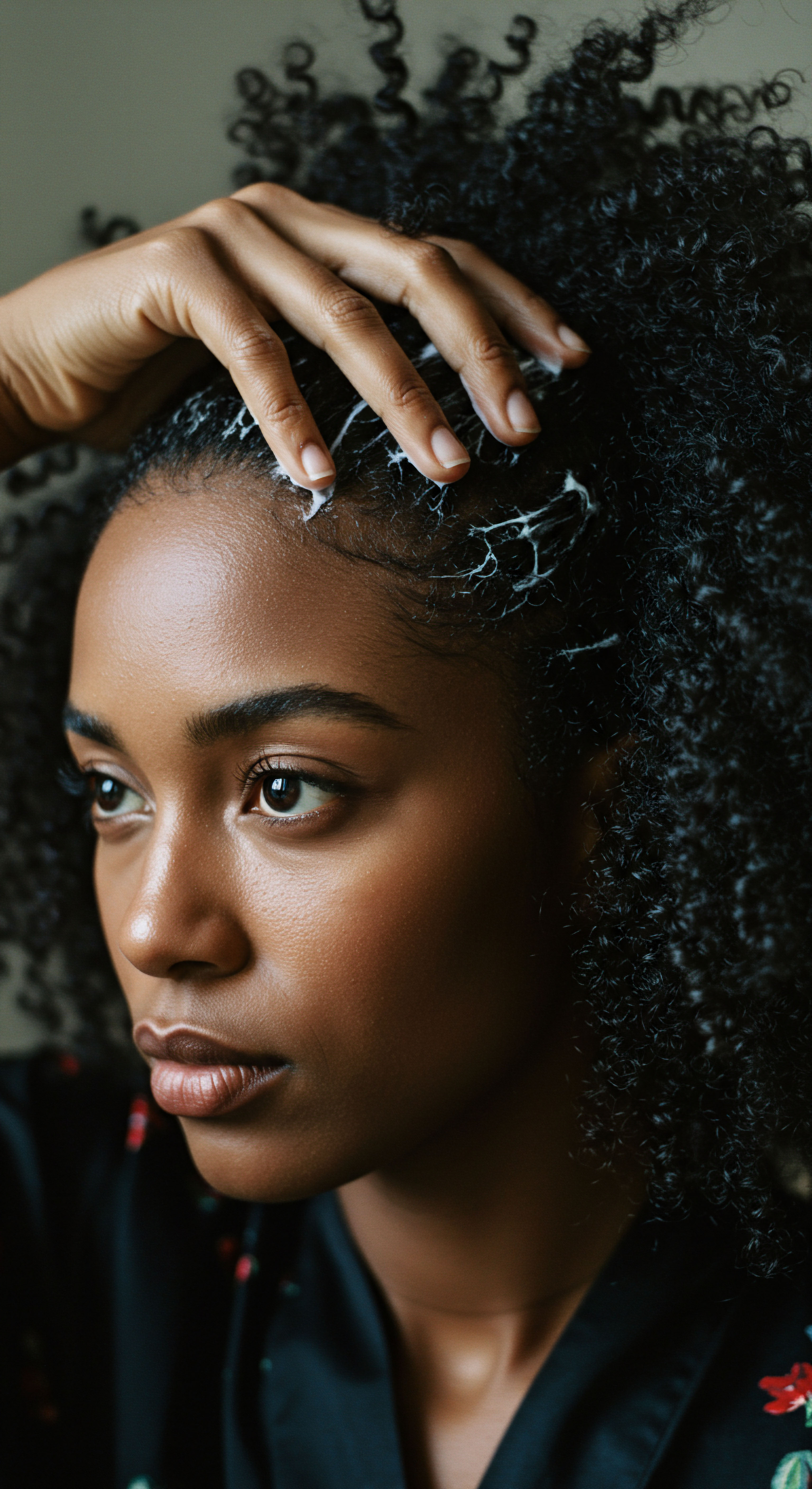
Reflection
The journey through ancient Egyptian wig use reveals more than just historical fashion; it unearths a profound connection between self-adornment and holistic well-being. These seemingly simple hairpieces were, in fact, sophisticated tools for managing health, social standing, and personal identity in a challenging environment. Their legacy whispers to us across millennia, reminding us that care for our strands, in whatever form, is deeply tied to our sense of self, our comfort, and our place within the larger world. The wisdom of these ancient practices continues to resonate, encouraging a thoughtful approach to our own hair journeys.
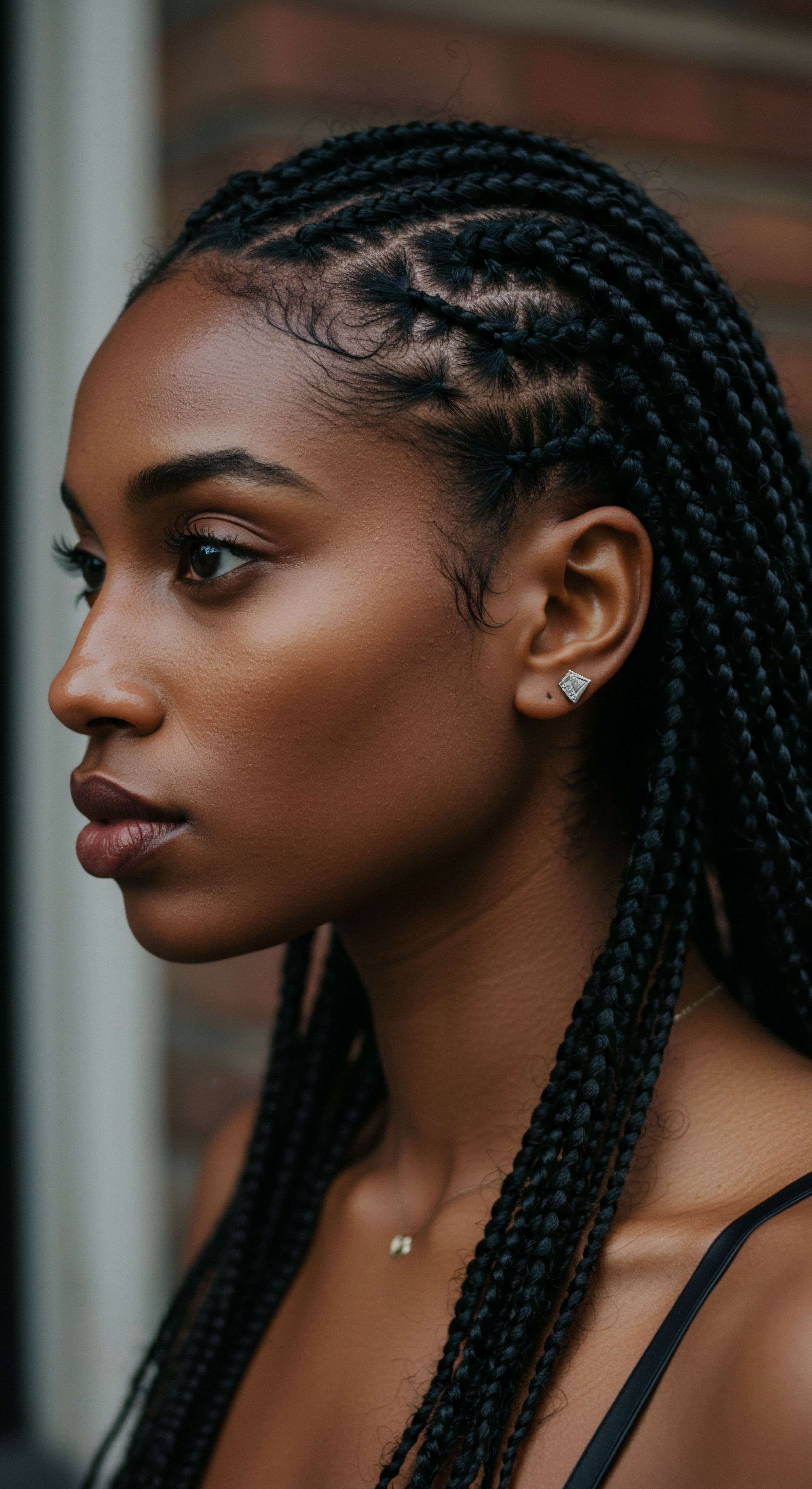
References
- Kandil, H. A. & Salama, M. E. A. (2018). Role of the hair in ancient Egypt. International Journal of Tourism and Hospitality Management, 1(1), 77-82.
- El-Hadidi, N. M. N. Ibrahim, M. A. & Hamdy, R. S. (2022). Identification and Decay Assessment of a Wig Box at the Egyptian Museum in Cairo. Egyptian Journal of Conservation, 2(1), 1-13.
- Fletcher, J. (1995). Ancient Egyptian Hair ❉ a study in style, form and function. Unpublished PhD thesis, University of Manchester.
- Fletcher, J. (2000). Hair. In P. Nicholson & I. Shaw (Eds.), Ancient Egyptian Materials and Technology (pp. 495-501). Cambridge University Press.
- Fletcher, J. & Salamone, F. (2016). An Ancient Egyptian Wig ❉ Construction and Reconstruction. Internet Archaeology, 42.
- Grapow, H. (1958). Grundriss der Medizin der Alten Ägypter V ❉ Die medizinischen Texte in Hieroglyphen und ihre Übersetzung. Akademie-Verlag.
- Kamal, H. (1991). The Ancient Egyptian Medicine (1st ed.). Madbouli Library.
- Leake, C. D. (1952). The Old Egyptian Medical Papyri. University of Kansas Press.
- Nezamabadi, M. (2014). New contribution of paleoparasitology in the middle east and first data on the iranian plateau adjacent area (Doctoral dissertation).
- Rosalind, M. & Janssen, J. J. (1996). Getting Old in Ancient Egypt. London.
- Smith, G. E. & Dawson, W. R. (1924). Egyptian Mummies. London.
- Tapp, E. (1984). Disease in ancient Egypt ❉ the evidence from the mummies. British Medical Journal (Clinical Research Ed.), 289(6444), 541-543.
- Tassie, G. J. (2009). Hair-Offerings ❉ An Enigmatic Egyptian Custom. Papers from the Institute of Archaeology, 20(1), 93-104.
- Tassie, G. J. (2014). The Social and Ritual Contextualisation of Ancient Egyptian Hair and Hairstyles from the Protodynastic to the End of the Old Kingdom (Doctoral dissertation, University College London).
- Zink, A. R. Spigelman, M. & Nerlich, A. G. (2006). Visceral leishmaniasis in ancient Egypt. Emerging Infectious Diseases, 12(10), 1612.